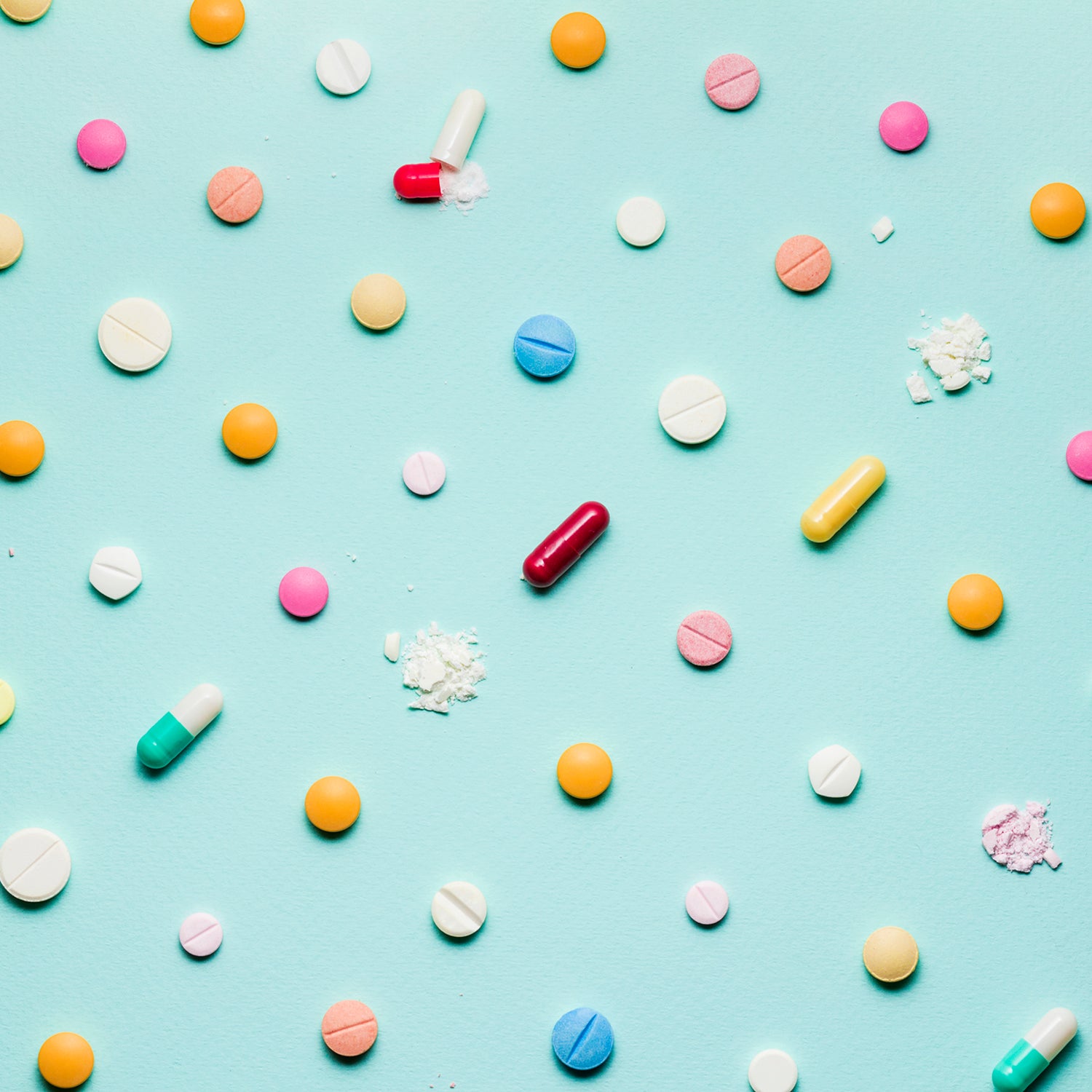It’s time to change your supplement strategy. Unless you have a medical condition that prevents you from properly absorbing the nutrients from your foods or follow a diet that requires you to eliminate entire food groups (like vegan or vegetarian), opt for whole, real foods rather than pills, capsules, or powders. You’ll avoid some of the pitfalls of popping supplements, and you’re probably already getting what you need. “If you’re eating a variety of whole foods and balancing whole grains and legumes with adequate proteins, lots of green/leafy veggies, and healthy fats, you are likely meeting and even exceeding your nutritional requirements,” says Eliza Savage, nutritionist at Middleberg Nutrition in New York City. Luckily, the most popular supplements—typically like a probiotic or omega-3 fatty acid—are also some of the most plentiful in whole-food form, which means it’s easy to make the change.
These simple guidelines will help you get these supplements into your diet naturally.
Calcium
Why You Need It
Your elementary school health teacher was right: Calcium is key for protecting and strengthening bones, and it’s especially important if you do a lot of high-impact activities. (We’re looking at you, runners.) Calcium also plays a key role in muscle contraction, says Joy Bauer, author of and founder of . Without enough calcium, you’re more likely to experience muscle cramps during exercise.
How to Get It from Real Food
Your body can’t absorb large amounts of calcium all at once, so eat smaller portions of calcium-rich foods at every meal, Bauer says. Try a serving of cow’s milk, which naturally contains the nutrient, or nondairy milk, which most brands typically fortify with added calcium. Soybeans, white beans, collard greens, kale, broccoli, and almonds are also chock-full of it, she says.
Vitamin D
Why You Need It
Calcium and vitamin D work in tandem. To absorb the calcium you’re eating, you need high-enough levels of vitamin D, making this micronutrient vital for bone health.
How to Get It from Real Food
“Your body can make vitamin D with the help of sunlight, but you’ll want to get most of your daily intake from food,” Bauer says. Fatty fish like salmon, herring, mackerel, and sardines are great options, Bauer says. A three-ounce serving of sockeye salmon contains almost your entire recommended daily amount of vitamin D. You can also get smaller doses from egg yolks and fortified cow’s milk, almond milk, soy milk, and coconut milk.
Vitamin C
Why You Need It
Vitamin C doesn’t just boost your immune system; it’s also responsible for the health and production of collagen, the connective tissue that holds muscles and bones together, Bauer says. And since collagen production slows as you age, it’s especially important to consume it every day to remain active throughout your life. Research even suggests that people who eat may have a greater risk of developing certain forms of arthritis.
How to Get It from Real Food
Although oranges get most of the vitamin C glory, bell peppers have even more. Eating just one bell pepper a day (of any color) puts you well over the recommended 75 milligrams per day for women and 90 milligrams per day for men, Bauer says. Other picks include guava, grapefruits, strawberries, pineapple, broccoli, kidney beans, kiwi, and cauliflower.
Vitamin B Complex
Why You Need It
Vitamin B complex is actually mix of eight vitamins—B1, B2, B3, B5, B6, B7, B9, and B12—rather than just one single variation. Together, they help keep you energized, Savage says. Without B vitamins, your body won’t reap all the benefits of the nutritious foods you eat.
How to Get It from Real Food
Each B vitamin can be found in a variety of food sources, but it’s best to focus on dark leafy greens, beans and legumes, and animal products like fish, poultry, beef, eggs, and dairy. “I recommend trying to include at least two servings a day of these foods,” Savage says.
Omega-3 Fatty Acids
Why You Need It
Omega-3s are full of benefits: They’ve been shown to decrease inflammation, lower blood pressure, play a role in hormone production, and provide energy, Savage says.
How to Get It from Real Food
“There is debate about the optimal source of omega-3s—namely about plant versus fish-based sources—but just eating a variety of foods rich in omega-3 will satisfy your needs, says Savage. For animal sources, she recommends at least one 4.5-ounce serving of fish (like salmon, tuna, and sardines) or grass-fed dairy and meat twice per week. Vegans and vegetarians should eat nuts (try walnuts) and seeds (opt for flax) or soy products such as tofu and edamame to meet their recommended intake.
Probiotics
Why You Need It
Recent research has linked intestinal bacteria to everything from prevention and to , so maintaining a healthy gut is critical. Good bacteria also supports digestion, helping you absorb the nutrients you consume.
How to Get It from Real Food
The amount of bacteria in each food varies, but it’s a good idea to incorporate a variety of probiotic-rich foods into your diet each week, though remember to ease into how often you incorporate them. In this case, too much of a good thing can lead to bloat and discomfort. Savage’s go-tos are plain unflavored Greek yogurt or kefir in a smoothie, sauerkraut or kimchi on a sandwich, and kombucha or miso soup.


